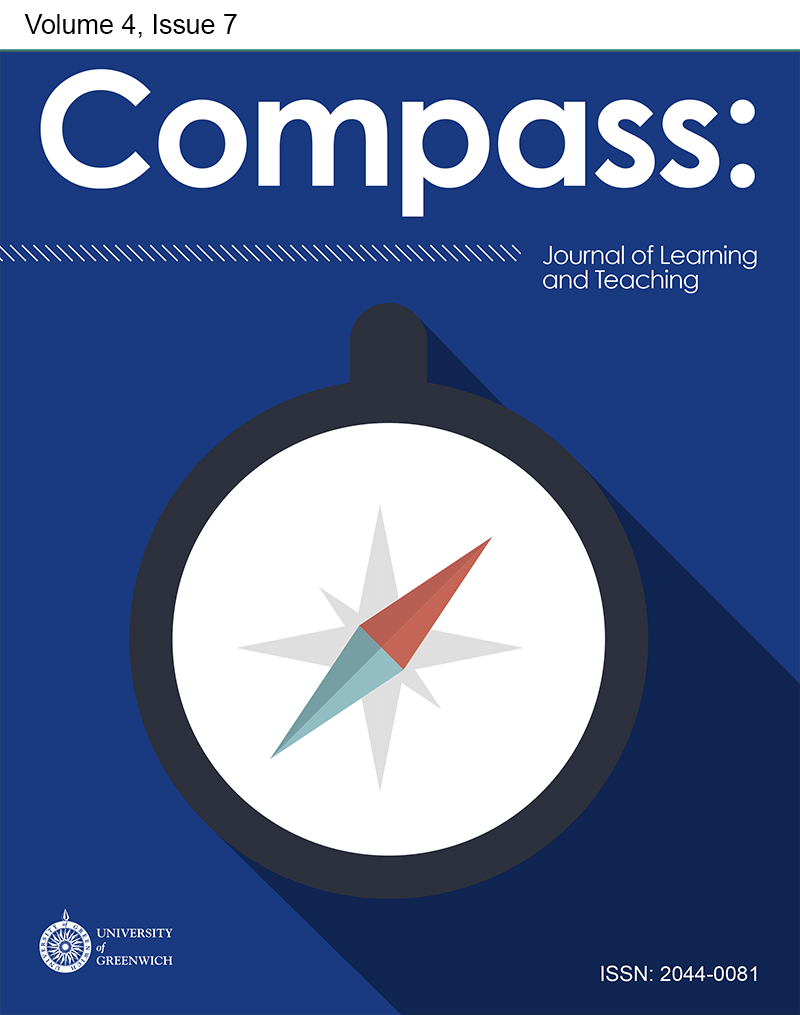Video Use in Reflective Practice: Experience from Educating Speech and Language Therapists
DOI:
https://doi.org/10.21100/compass.v4i7.82Abstract
This case study shares the experiences of speech and language therapy lecturers in higher education using video with students and practitioners to support reflective practice. The authors believe that video forms a fundamental role in developing the core skills of health, social and education professionals. Frequently teachers in higher education and students alike present with a reluctance to engage with the use of video. Possible reasons for this are discussed. The importance of careful preparatory and debriefing sessions is emphasized, as is the need for an observation schedule. The key ingredients to ensuring that video is effective as a learning tool as well as the challenges are examined. The experience may well have resonance with others in higher education involved in the development of critical reflection associated with students’ communication and interaction.
References
Bellini, X. and Akullian, Y. (2007) ‘A meta-analysis of video modeling and video self-modeling interventions for children and adolescents with autism spectrum disorders.’ Exceptional Children 73(3), 264-287.
Brennan, S. Galati, A. and Kuhlen, A. (2010) ‘Two Minds, One Dialog: Coordinating speaking and understanding in the psychology of learning and motivation’. In Ross, B.H. (ed) The Psychology of Learning and Motivation: Advances in Research and Theory, Vol. 53, Burlington: Academic Press, 301-344.
Brown, K. and Rutter, L. (2006) Critical Thinking: A Guide in Enhancing, Learning and Writing for Post Qualifying Social Work Programmes. Exeter: Learning Matters Limited.
Cave, R. Roger, A. and Young, R. (2011) ‘Enhancing Teacher and Student interactions in Higher Education through Video Enhanced Reflective Practice’ in Kennedy, H.; Landor, M. and Todd, L. (eds) Video Interaction Guidance: A relationship-based intervention to promote attunement, empathy and wellbeing London: Jessica Kingsley, chapter 11 pp181-197.
Landor, M. and Todd, L. (2011) Video Interaction Guidance: A relationship-based intervention to promote attunement, empathy and wellbeing. London: Jessica Kingsley.
Cummins, K. and Hulme, S. (1997) ‘Video: a reflective tool.’ Speech and language therapy in practice, Autumn, 4-7
Cummins, K. Pullen, K. and Hulme, S. (2012) ‘Managing pre-school children in community settings’ in Kersner, M. and Wright, J. (eds). Speech and language therapy the decision making process when working with children. London: Routledge chapter 4 pp 39-46.
Fook, J. and Askeland, G. (2007) ‘Challenges of Critical Reflection: “Nothing Ventured, Nothing Gained.”’Social Work Education, 25(6), 520-533.
Fukkink, R. Trienekens, N. and Kramer, L. (2011) ‘Video feedback in Education and Training: Putting Learning in the Picture’. Education Psychology Review, 23(1) 45-63.
Jasper, M. (2003) Beginning Reflective Practice: foundations in nursing and healthcare. Cheltenham: Nelson Thornes.
Kennedy, H. Landor, M. and Todd, L. (2011) Video Interaction Guidance: A relationship-based intervention to promote attunement, empathy and wellbeing. London:Jessica Kingsley.
McCluskey, U. (2005) To be met as a person – the dynamics of attachment in professional encounters. London: Karnac books.
Oelofsen, N. (2012) Developing reflective practice: a guide for students and practitioners of health and social care. Banbury: Lantern.
Pailliotet, A. (1995) ‘I never saw that before: a deeper view of video analysis in teacher education’. Teacher Educator, 31(2), 138-156.
Downloads
Published
How to Cite
Issue
Section
License
Compass: Journal of Learning & Teaching provides immediate open access to its content on the principle that making research freely available to the public supports a more equitable global exchange of knowledge.
Works are released under the default licence of Creative Commons Attribution 4.0 International (CC BY), which provides unrestricted use, distribution, and reproduction in any medium, provided the original work is properly cited. If authors require a divergent licence, please contact the Scholarly Communications Manager at scholarlycommunications@greenwich.ac.uk.
Authors of articles published in Compass: Journal of Learning & Teaching remain the copyright holders to their published work and grant third parties the right to use, reproduce, and share the article according to terms of the Creative Commons license agreement applied to the work by Compass: Journal of Learning & Teaching.
Self-archiving policy: authors are permitted, and encouraged, to deposit any version of their article - submitted, accepted, and published versions - in subject and institutional repositories at any time.
If you have any queries about the choice of license, or which to discuss other options, please contact the Scholarly Communications Manager at scholarlycommunications@greenwich.ac.uk.



